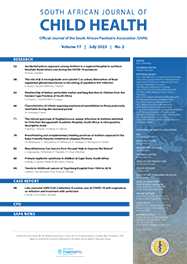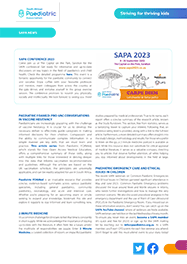Case Reports

Discrepant clinical haematology features in siblings of Pakistani origin with β-thalassaemia
Abstract
An eight year old boy was referred with anaemia and splenomegaly. Physical examination revealed short stature, thalassaemic facies, pallor and splenomegaly.
Results:
The FBC showed a hypochromic, microcytic anaemia. Serum ferritin was normal. Haemoglobin electrophoresis revealed 56% HbF, 2.3% HbA2 and 41.7% HbA.
Using polymerase chain reaction (PCR) and deoxyribonucleic acid (DNA) sequencing, two different β-thalassaemia mutations were identified in the parents. Both parents thus had a β-thalassaemia trait whilst both children were compound heterozygotes.
The propositus had become transfusion dependent while his sister had managed to maintain her Hb above 8.5 g/dl. The family was studied for α+-thalassaemia and hereditary persistence of foetal haemoglobin (HPFH) deletions as well. This showed that the daughter had inherited a single α gene deletion from her mother which the son had not. Studies for HPFH mutations revealed that all four family members had one γ point mutation.
Conclusion:
The presence of HPFH in this family cannot be considered to have any effect on the thalassaemia major phenotype as neither of these β mutations are known to be associated with any HbF induction. It is also possible that the daughter inherited a non-deletion HPFH gene which her brother did not.
Authors' affiliations
Andrea Prinsloo, NHLS and UP
Johan Potgieter, NHLS and UP
Roger Pool, NHLS and UP
Johannes Opperman, UP and Gauteng Deparment of Health
Vanessa Moodley, NHLS and UP
Shirley Henderson, Churchill Hospital
John Old, Churchill Hospital
Full Text
Keywords
Cite this article
Article History
Date published: 2009-05-27
Article Views
Full text views: 1481

.jpg)



Comments on this article
*Read our policy for posting comments here